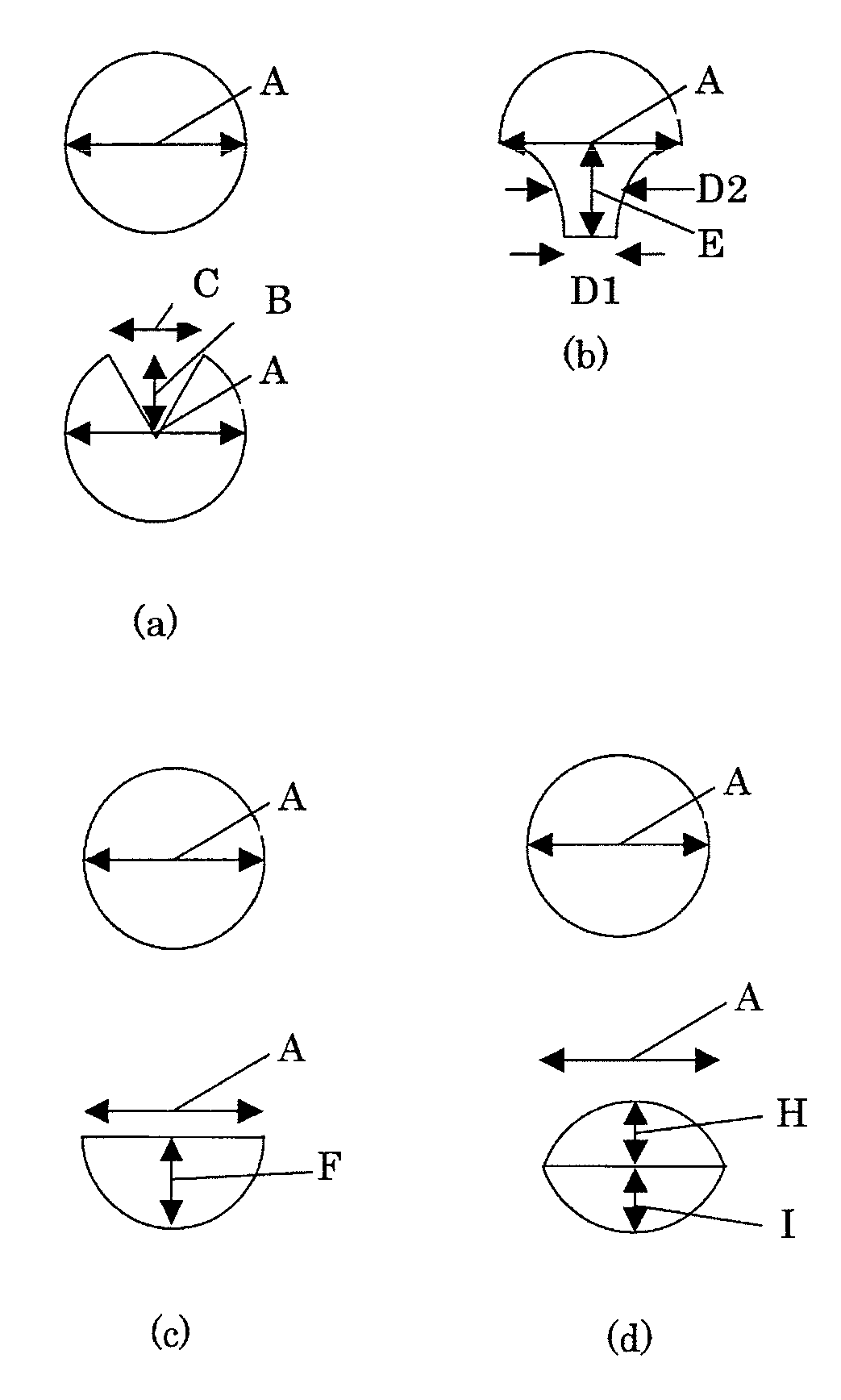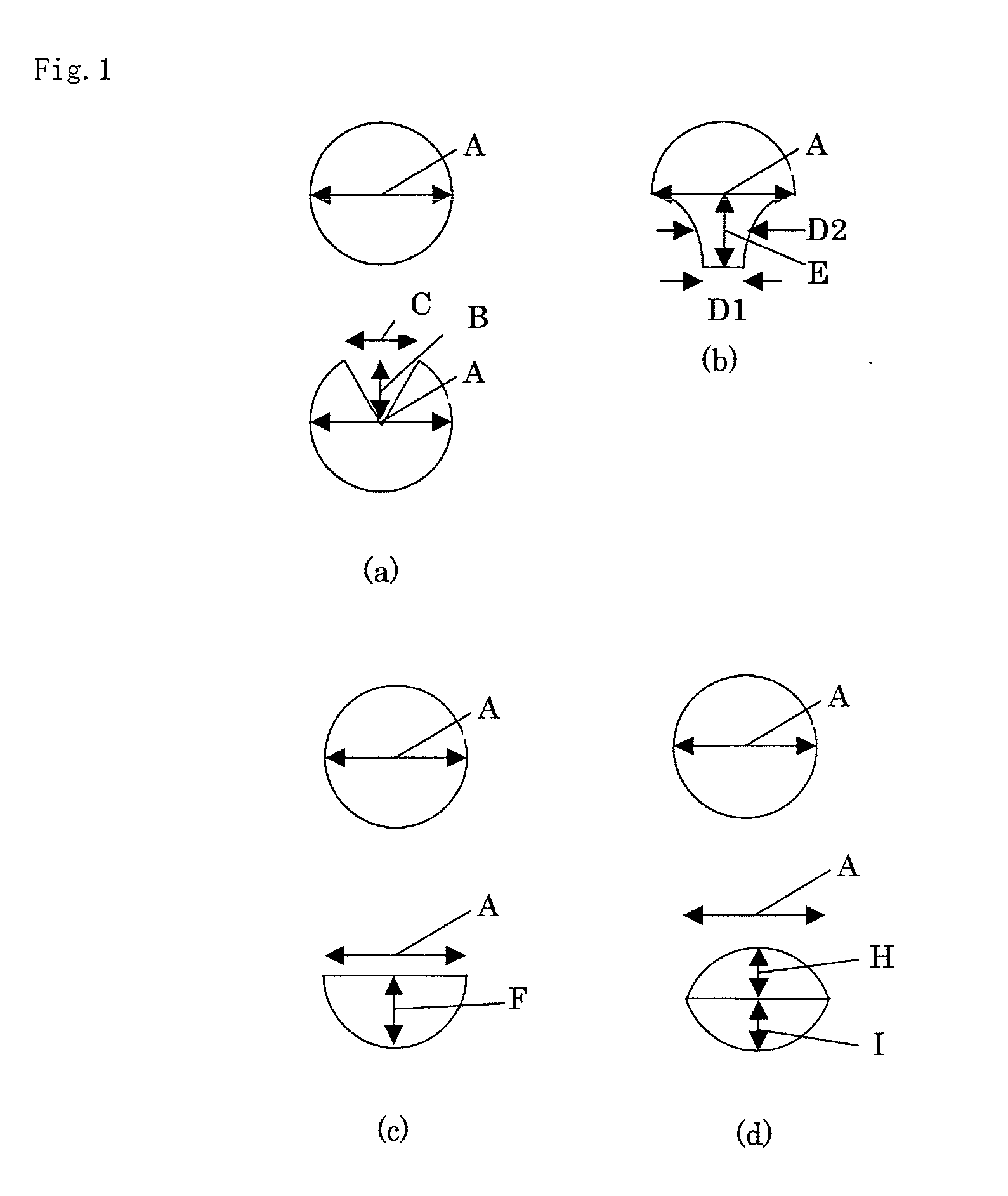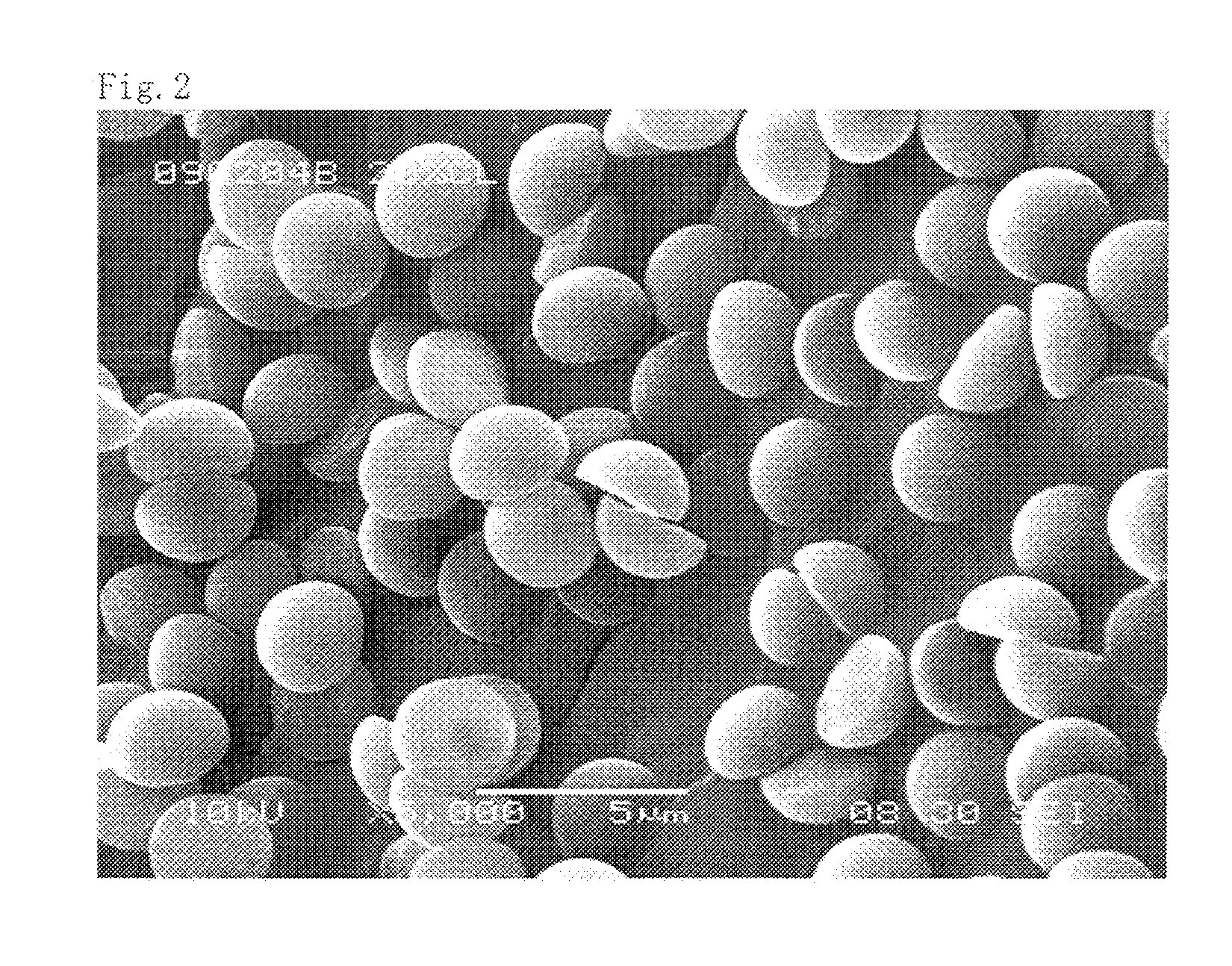Deformed shaped particles and method for producing the same
- Summary
- Abstract
- Description
- Claims
- Application Information
AI Technical Summary
Benefits of technology
Problems solved by technology
Method used
Image
Examples
synthesis example 1
of Emulsion for Seed Particle Formation
[0097]A separable flask equipped with a stirrer, a thermometer, and a reflux condenser was loaded with 600 g of water, 100 g of methyl methacrylate and 0.5 g of n-dodecyl mercaptan, an inside atmosphere was replaced with nitrogen under stirring, and the contents were heated to 70° C. After an inner temperature in the flask was kept at 70° C. and potassium persulfate as a polymerization initiator was added to the stirred mixture, a polymerization reaction was carried out for 8 hours to obtain an emulsion. The obtained emulsion contained 14% of a solid matter. The solid matter contained spherical particles with a particle diameter of 0.4 μm and a weight average molecular weight of 600000.
synthesis example 2
of Emulsion for Seed Particle Formation
[0098]A separable flask equipped with a stirrer, a thermometer, and a reflux condenser was loaded with 600 g of water, 100 g of methyl methacrylate and 0.5 g of n-dodecyl mercaptan, an inside atmosphere was replaced with nitrogen under stirring, and the contents were heated to 60° C. After an inner temperature in the flask was kept at 60° C. and potassium persulfate as a polymerization initiator was added to the stirred mixture, a polymerization reaction was carried out for 8 hours to obtain an emulsion. The obtained emulsion contained 14% of a solid matter. The solid matter contained spherical particles with a particle diameter of 0.8 μm and a weight average molecular weight of 600000.
synthesis example 3
of Emulsion for Seed Particle Formation
[0099]A separable flask equipped with a stirrer, a thermometer, and a reflux condenser was loaded with 600 g of water, 100 g of isobutyl methacrylate and 0.5 g of n-dodecyl mercaptan, an inside atmosphere was replaced with nitrogen under stirring, and the contents were heated to 70° C. After an inner temperature in the flask was kept at 70° C. and potassium persulfate as a polymerization initiator was added to the stirred mixture, a polymerization reaction was carried out for 12 hours to obtain an emulsion. The obtained emulsion contained 14% of a solid matter. The solid matter contained spherical particles with a particle diameter of 0.4 μm and a weight average molecular weight of 300000.
PUM
| Property | Measurement | Unit |
|---|---|---|
| Length | aaaaa | aaaaa |
| Length | aaaaa | aaaaa |
| Length | aaaaa | aaaaa |
Abstract
Description
Claims
Application Information
 Login to View More
Login to View More - R&D Engineer
- R&D Manager
- IP Professional
- Industry Leading Data Capabilities
- Powerful AI technology
- Patent DNA Extraction
Browse by: Latest US Patents, China's latest patents, Technical Efficacy Thesaurus, Application Domain, Technology Topic, Popular Technical Reports.
© 2024 PatSnap. All rights reserved.Legal|Privacy policy|Modern Slavery Act Transparency Statement|Sitemap|About US| Contact US: help@patsnap.com










